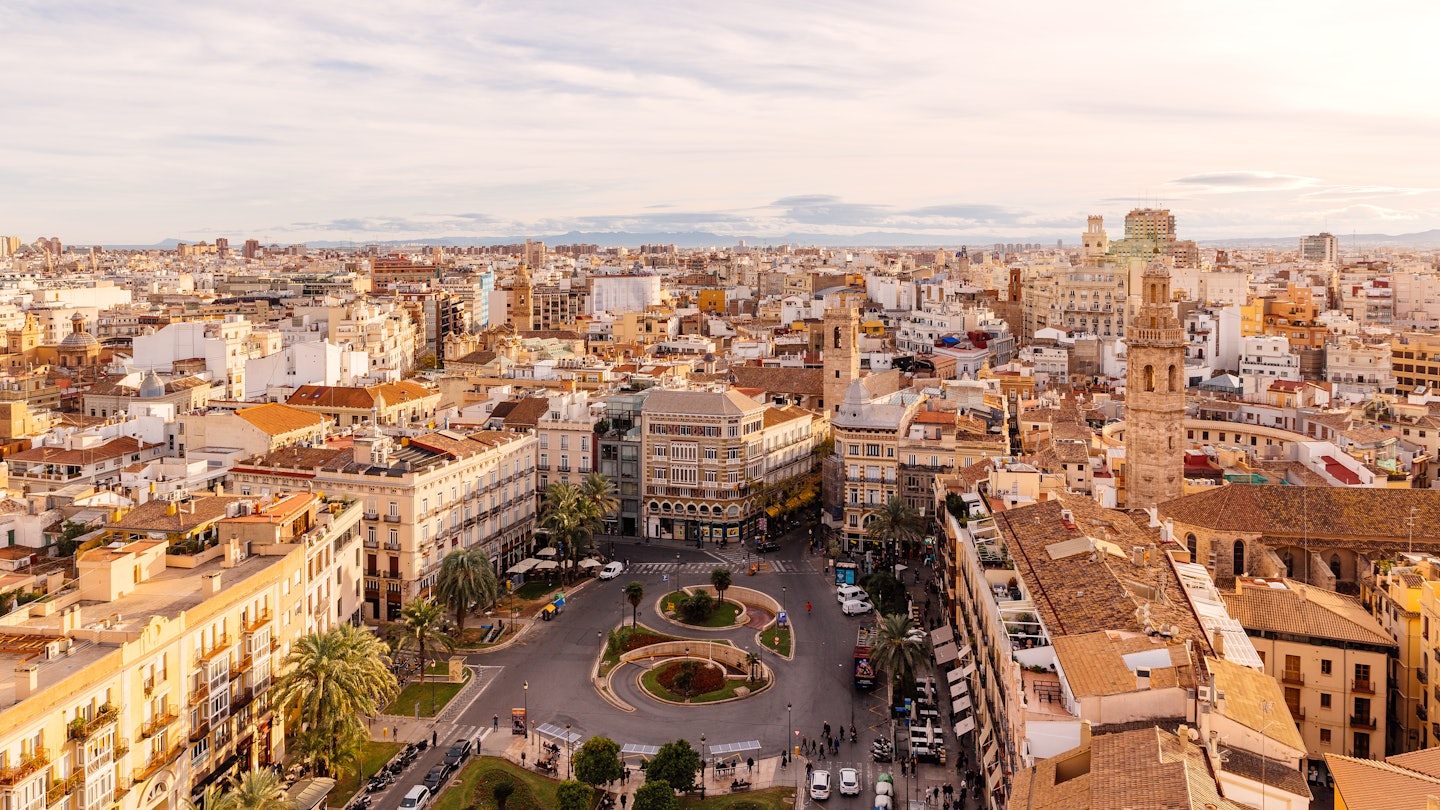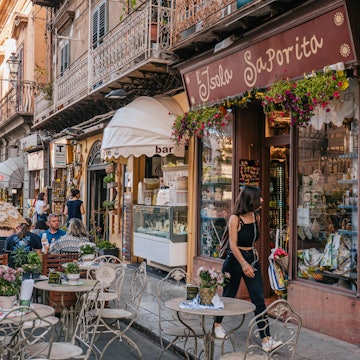

With lower costs than Barcelona and Madrid, plus plenty of free things to do, Valencia has loads to offer the budget traveler. Alexander Spatari/Getty Images
Spain's rising star Valencia has a remarkably humble, down-to-earth character. Dining out is affordable, nights out are unpretentious, and drinks are inexpensive, with wine from €2.50 (about $3) and a caña (small beer) around €1.50 (about $2).
Many top sights are free or ticketed with modest entry fees (La Lonja only costs €2, or just over $2). Away from the well-trodden path, countless free things are on offer, from open-air festivals to tiny art galleries hidden in old bus stations to off-the-radar beaches. It's ideal for culture-rich experiences without breaking the bank. Read on for our list of the best free things to do in Valencia.
1. Visit a gallery hidden inside an old bus station
Hundreds of people walk past this gallery each day without knowing it. It might seem plain, but this old bus station has had a dramatic makeover. Look closely: the plain white façade has a barely-there watermark that reads Gabinete de Dibujos. Boxed off inside is a roughly double-decker-sized gallery, a small space filled with exhibitions that push the envelope. Find the doorbell and ring; an anonymous gatekeeper (there's often no-one inside the room) will buzz you in. Work is loosely tied to the theme of drawing: one month it's delicate botanical sketches in pencil, the next some abstract installations made with PVC pipes.

2. See modern art and delve into art publications
Perched on the fringes of Barrio del Carmen, Instituto Valenciano de Arte Moderno (IVAM) opened in 1989. Inside, the sleek gallery showcases 20th-century Spanish work and contemporary artists from around the world. There are eight spaces to explore, spread over 18,200 sq meters. Bookworms should find the library, a collection of 54,000 documents including what seems like every book ever published on Joan Miró and fanzines by art legends, all free to pore over.
Planning tip: To get into the gallery for free (usual entry is €5, or about $6), visit between 4pm and 7pm on Wednesdays or any time on Sundays.

3. Admire the most out-of-this-world architecture
The otherworldly buildings of Ciudad de las Artes y las Ciencias are one of Valencia’s prized highlights. Occupying a 1.5km-long swath of the old Turia riverbed, the buildings are mostly the work of locally born architect Santiago Calatrava. He's a controversial figure for some, due to overspending and design issues. But fear not: overspending will not be an issue for budget-conscious visitors, who can swan through the complex without paying a penny. Make time to saunter through the Umbracle garden, scented with rosemary and honeysuckle and shaded by over 100 orange and palm trees.

4. Give back to the community and join a beach clean-up
The best way to enjoy the beach isn't always by lying on a sun lounger. Give back to the community and help out with a local beach clean-up. Jolly volunteering days are regularly organized by Bioagradables, a not-for-profit collective that aims to protect Valencia's natural environment through action days and education on local beaches. It's a lovely way to make a difference – and make friends. Don't forget to take sunscreen and a bottle of water (preferably not plastic).
5. Witness a fascinating 1000-year-old tribunal
There is a charming tradition that has been taking place for over 1000 years in Valencia, and it's totally free to observe. Every Thursday, eight farming representatives meet in the grand Puerta de los Apóstoles of Catedral de Valencia. There is a sense of occasion as midday nears, and hundreds gather and crane their necks to see solemn staff wipe down 17th-century leather seats and polish brass finials. As the bell strikes overheard, the trustees of the Tribunal de las Aguas arrive dressed in black robes, to be seated in a semicircle facing the crowd. They're here to solve issues around irrigation in the local farmland. Sound dry? It's a hot topic in the farming world – think of all those orange groves to water.
Local tip: Sometimes, onlookers appear underwhelmed. Our advice? Don't expect a grand performance – this is not a ceremony to entertain onlookers. Come to witness an ancient tradition and get a sense of Valencia's farming soul.
6. Tap your toes to live jazz
Valencia is one of the outposts for the Boston-based Berklee College of Music, and the free music festival, Un Lago de Conciertos, shows off alumni's talent. The open-air gigs feature the college's best bands, and performances range from jazz to R&B. The stage is found behind Museo de las Ciencias, backed by the calm turquoise water and shaded by Calatrava's outlandish buildings.
Planning tip: Gigs take place from April to July, September and October, check valencia.berklee.edu for dates.

7. Spot the teeniest cat house
Among the tall townhouses on Calle del Museo, there's a façade no more than two feet tall. Number nine is a mini-mansion for cats, featuring a tiny doorway, individual tiles and French doors with teeny curtains. It was made in 2003 by Alfonso Yuste Navarro, and leads to an open patio where felines roam freely. The artist dedicates the piece to the surviving cats of 1094, the year that El Cid conquered Valencia and – according to legend – ordered the eradication of all the cats in the city. Today, the city's four-legged friends are treated like royalty.
8. Escape the crowds on a rewilded beach
Everyone loves the vibrant city beaches of Valencia, but few visitors get to discover the sandy stretches further down the coast. For a more peaceful day beside the sea, head to Playa de la Devesa. It is a rugged beach, backed by dunes and scattered with seashells. In the 1970's a project was launched to turn La Devesa into a tourist resort, razing the dunes. There was uproar, and the project was halted. Finally, in 1986, the area was declared a nature reserve. Today, the rewilded beach is accessed by a butterfly-frequented footpath, bordered by rosemary and pine trees.
Planning tip: The number 24 or 25 bus takes around 30 minutes from Porta de la Mar, then it's a 20-minute walk to the beach
















